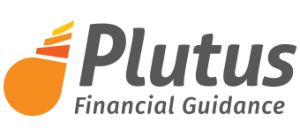Important considerations before setting up a self managed super fund
Self managed super funds (SMSFs) have gained increasing popularity in recent years. The below table from the ATO highlights how the number of self managed super funds have grown from 473,408 in 2012 to 577,236 in 2016.

There are however, some very important considerations to take into account before setting up a self managed super fund (SMSF) for yourself.
Please note, you can also find more information in my previous articles about SMSFs “An Easy Guide to Self Managed Super Funds (SMSFs)” and for SMSF returns see “Wealth creation via long-term investments“.
1. Before setting up a self managed super fund consider your time.
Your time is precious and valuable. Therefore factor in the cost, time and skills required for you to manage your self managed super fund (SMSF).
As the trustee of your SMSF, you need to ensure compliance within various laws as non-compliance will incur severe penalties and your fund may suffer tax consequences. Compliance requirements include:
- accepting contributions and paying benefits
- advising the ATO of changes in trustees, directors or members
- appropriate record keeping for a minimum of 5 or 10 years pending on the item
- continually assess your capacity to act as a trustee and whether the SMSF is still an appropriate option for your fund members
2. Before setting up a self managed super fund consider the added responsibility.
You are also responsible for making investment decisions for the SMSF. This includes formulating an investment strategy that you review regularly.
Ensure you understand any investment restrictions that apply to self managed super funds.
Self managed super funds have initial setup costs as well as ongoing running costs. There will be an annual independent audit and supervisory levy. Other paid help might include preparation of annual return, valuation of assets, actuarial certificate, financial advice, legal fees in relation to trust deed, assistance with fund administration and insurance for members. For more details on insurance, see the following Goggling articles below:
- “Is it just income protection that matters?“
- “Is Life Insurance Worth It?“
- “Forward thinking: Contingency plans and protection for your family“
Remember that the Australian Taxation Office (ATO) regulates self managed super funds whilst the Australian Prudential Regulation Authority (APRA) regulates all other superannuation funds. APRA regulated funds that suffer losses due to fraud or theft can potentially get access to financial assistance. On the contrary, no government or industry compensation is available for members of a SMSF as it is outside APRA regulation. APRA funds have access to the Superannuation Complaints Tribunal whereas SMSF need to resolve complaints and disputes through court. The tribunal generally deal with superannuation complaints and disputes in a fair, economical, informal and quick way. On the other hand, court cases can be complicated and costly.
There are several ways the ATO deals with non-compliance in self managed super funds. For example:
- Educational direction
- Enforceable undertaking
- Rectification direction
- Administrative penalties – varying from 5 to 60 penalty units where a penalty unit currently is $210
- Disqualification of a trustee
- Civil and criminal penalties
- Allowing the SMSF to wind up
- Notice of non-compliance
- Freezing an SMSF’s assets
3. Before setting up a self managed super fund consider your goals and timeline.
It is not a silver bullet and it is not about instant gratification nor overnight success.
Hence, starting your SMSF is not a decision to be made lightly.
As a self managed super fund advisor, I think there is merit with SMSFs where it is appropriate. Have a look at the SMSF information provided on the ATO website. I consider this as the minimum required knowledge for you to make an informed decision on SMSFs.
